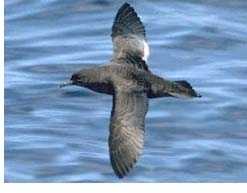Philippe Cury (Institut de Recherche pour le Développement, Sète, France) and colleagues writing in the journal Science have looked at the effect of fluctuations in food abundance on seabird breeding success for 14 species in several different oceans.
Although none of the species they studied is ACAP-listed and only one, the Arctic or Northern Fulmar Fulmarus glacialis is a procellariiform, the study has implications for all species of seabirds whose prey is subject to over-exploitation by commercial fisheries. For example, such would include some of the higher-latitude-breeding shearwaters Puffinus spp. that have been considered as potential candidates for listing.
The paper's abstract follows:
"Determining the form of key predator-prey relationships is critical for understanding marine ecosystem dynamics. Using a comprehensive global database, we quantified the effect of fluctuations in food abundance on seabird breeding success. We identified a threshold in prey (fish and krill, termed "forage fish") abundance below which seabirds experience consistently reduced and more variable productivity. This response was common to all seven ecosystems and 14 bird species examined within the Atlantic, Pacific, and Southern Oceans. The threshold approximated one-third of the maximum prey biomass observed in long-term studies. This provides an indicator of the minimal forage fish biomass needed to sustain seabird productivity over the long term."

Short-tailed Shearwaters Puffinus tenuirostris feed on ""forage fish" in two hemispheres
Photograph by Mark Carey
Reference:
Cury, P.M., Boyd, I.L., Bonhommeau, S., Anker-Nilssen, A., Crawford, R.J.M., Furness, R.W., Mills, J.A., Murphy, E.J., Österblom, H., Paleczny, M., Piatt, J.F., Roux, J.-P., Shannon. L. & Sydeman, W.J. 2011. Global seabird response to forage fish depletion -one-third for the birds. Science 334: 1703-1706.
For a review of the paper click here.
With thanks to Philippe Cury for information.
John Cooper, ACAP Information Officer, 26 December 2011

 English
English  Français
Français  Español
Español